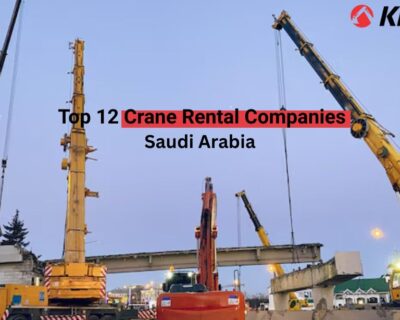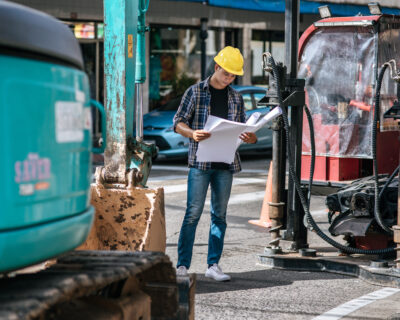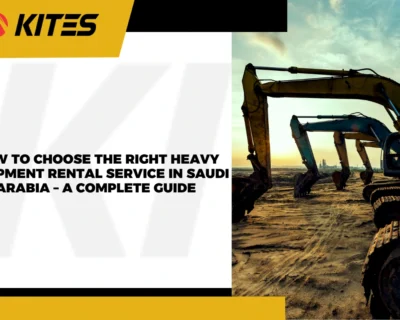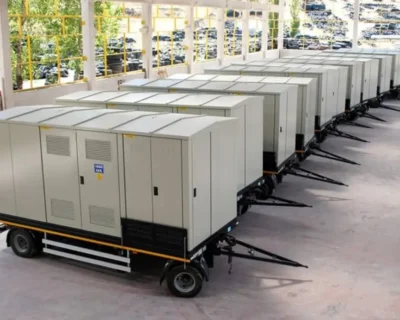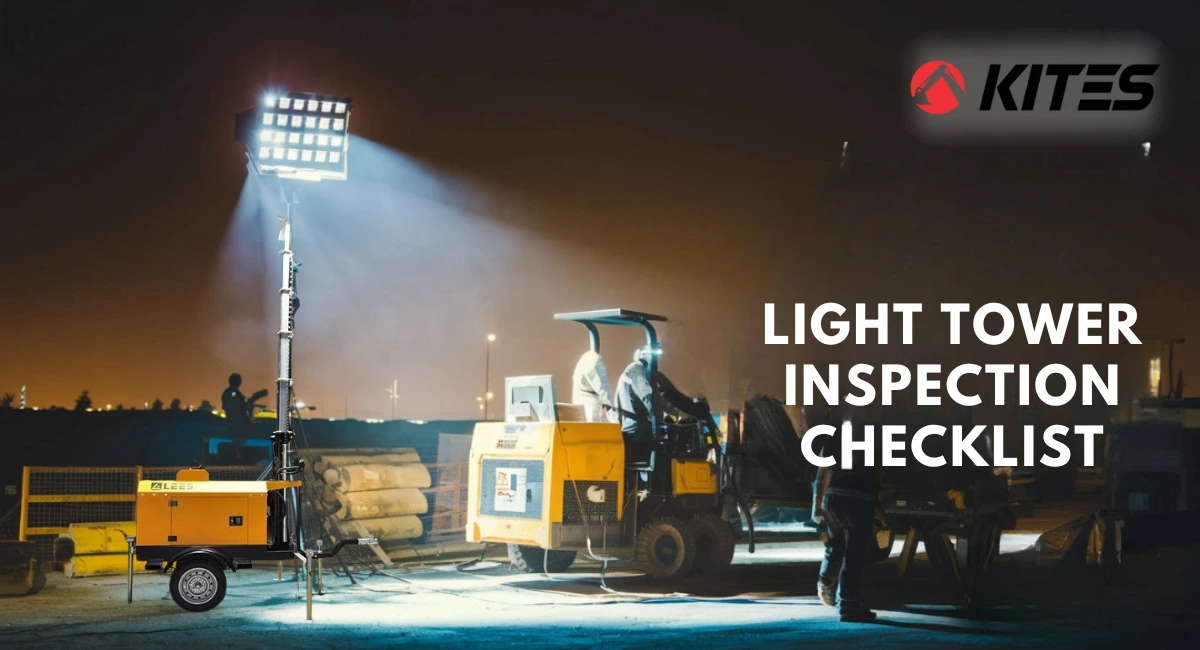
Light Tower Inspection Checklist: What to Check Before Using a Rental Unit
Renting a tower light generator or a portable light tower generatorcan save you time and money for short-term lighting needs on construction sites, events, or emergency services. However, proper inspection is crucial before you power up and illuminate your workspace. A thorough light tower inspection checklist helps you:
- Prevent equipment failures
- Ensure operator safety
- Avoid costly downtime and delays
- Comply with rental company requirements
Below is a detailed guide to help you perform a pre-use inspection and know precisely what to look for before renting and operating any portable light tower.
Pre-Use Checklist for Rented Light Towers
Before starting the engine or extending the tower, walk around the unit and review every critical system. Your pre-use checklist should include:
- Documentation & Manuals
- Verify that the operator’s manual and inspection log are present.
- Confirm the rental provider’s maintenance stickers and dates.
- Overall Unit Condition
- Inspect for visible damage, dents, or missing panels.
- Check for loose or missing fasteners and bolts.
- Stability & Positioning
- Ensure the unit is on level ground.
- Confirm that stabilizers are extended and locked.
Visual Inspection Essentials
A careful visual inspection is the foundation of any reliable light tower inspection checklist. Key points include:
- Frame and Chassis
- Look for cracks, corrosion, or weld defects.
- Inspect lifting points and handles for integrity.
- Masts and Winches
- Check the telescoping mast for bends, rust, or damage.
- Operate the winch (without a load) to ensure smooth extension and retraction.
- Cables and Hoses
- Examine fuel lines, hydraulic hoses, and electrical wires for abrasions or leaks.
- Verify that cable clamps and brackets are secure.
Checking Fuel and Fluid Levels
Proper fluid maintenance is essential for a reliable tower light generator. Follow these steps:
- Fuel
- Confirm there is sufficient fuel for at least one complete shift of operation.
- Check for water or sediment in the fuel tank (if transparent or with a sight gauge).
- Engine Oil
- Wipe and check the dipstick; top up to the recommended level.
- Look for oil discolouration or metal particles.
- Coolant
- Inspect the coolant reservoir or radiator cap (only when cold).
- Ensure correct antifreeze concentration and no leaks.
- Hydraulic Oil (if applicable)
- Verify levels and look for cloudiness or contamination.
- Check fittings and cylinders for hydraulic fluid leaks.
- Battery Electrolyte
- Inspect battery terminals for corrosion.
- Confirm fluid levels in each cell if accessible.
Tires and Stabilizer Setup
A portable light tower generator needs stable footing and easy mobility. Include:
- Tyre Condition
- Check tread depth and sidewall for cuts or bulges.
- Ensure proper tyre inflation per manufacturer specifications.
- Wheel Nuts and Bearings
- Verify that lug nuts are torqued correctly.
- Spin each wheel to check for bearing noise or stiffness.
- Stabilizer Jacks/Outriggers
- Fully deploy all stabilizers on uneven surfaces.
- Confirm locking pins or clamps are engaged.
- Assess pads or feet for wear and stability.
Verifying Lighting Components and Operation
The core function of the unit is illumination. Here’s how to confirm it’s ready:
- Light Fixtures
- Inspect lenses for cracks, fogging, or water ingress.
- Ensure fixtures are securely mounted and adjustable locks hold position.
- Bulbs/LED Modules
- Power on the lights and cycle through intensity settings.
- Replace any non-operational or flickering bulbs.
- Wiring and Switches
- Test all control switches and emergency shut-offs easily accessible.
- Check wiring harnesses for chafing or loose connectors.
- Rotation and Elevation Mechanisms
- Verify that the mast rotates smoothly and stops securely.
- Test elevation controls under supervision to confirm the safe operation.
Safety Checks Required by Most Rental Companies
Rental providers often mandate specific inspections to comply with safety standards. Your checklist should cover:
- Load Capacity Placards
- Verify visible load-rating decals on the mast and chassis.
- Grounding Points
- Confirm the presence of grounding lugs or points to prevent static discharge.
- Guarding and Shields
- Inspect engine guards, belt shields, and exhaust protectors for completeness.
Emergency Stop and Fire Safety
Rapid shutdown and fire prevention are vital:
- Emergency Stop Button
- Test the E-stop to ensure the engine and lights shut off immediately.
- Reset the button and restart the system per the manufacturer’s instructions.
- Fire Extinguisher
- Confirm that a charged, rated fire extinguisher is mounted and accessible.
- Check the expiration date and pressure gauge.
- Engine Compartment
- Inspect for accumulated debris (leaves, Oil) that could ignite.
- Ensure exhaust manifolds and mufflers are free of soot build-up.
Exhaust, Grounding, and Environmental Setup
Environmental considerations protect both people and equipment:
- Exhaust Direction
- Position the tower so fumes vent away from occupied areas.
- Grounding
- Attach grounding cables to a verified earth ground or grounding rod.
- Check continuity with a multimeter.
- Noise and Emission Compliance
- Review the rental company’s noise level documentation.
- Confirm that emission controls (e.g., spark arrestors) are intact.
What to Do If You Spot an Issue
Even with the best light tower inspection checklist, problems may arise. Follow these steps to keep your project on schedule:
Reporting Problems to the Rental Provider
- Document Findings
- Photograph defects, leaks, or broken components.
- Note the time, date, and unit identification tag.
- Immediate Notification
- Contact the rental company’s emergency or on-site service line.
- Provide precise details on the malfunction and your location.
- Tag Out of Service
- Attach a “Do Not Operate” tag if the unit is unsafe.
- Arrange for replacement or repair before further use.
Avoiding Delays and Downtime
- Request Backup Units
- Many rental firms, including KITES, keep standby units for rapid deployment.
- Schedule Preventive Maintenance
- Coordinate with the provider for mid-rental inspections on long-term hires.
- Maintain a Spare Parts Kit
- Stock standard fuses, bulbs, and lubricants to address minor issues on site.
Why Renting from a Trusted Company Like KITES Matters
When you choose KITESfor your portable light tower generatorrental needs, you can be confident in our expertise and dedication to your safety and satisfaction.
Our Maintenance and Inspection Standards
- Rigorous Pre-Rental Servicing
- Every unit undergoes a 50-point inspection, including fluid analysis and lighting tests.
- Records are digitally logged for full traceability.
- OEM-Certified Technicians
- Our team follows manufacturer guidelines for tune-ups, belt replacements, and safety checks.
- Proactive Component Replacements
- Lights and filters are replaced based on run-hours, not just visual wear, reducing on-site failures.
Support and On-Site Services
- Technical Hotline
- Expert guidance is a phone call away, day or night.
- Rapid Response Fleet
- KITES maintains a network of service vehicles that can reach you within hours.
- Operator Training
- Complimentary walk-throughs on safe setup, emergency stops, and routine inspections.
Key Benefits of Partnering with KITES
- Reliability: Minimize downtime with well-maintained, high-performance units.
- Safety: Comply with OSHA and local regulations through standardized inspections.
- Convenience: Flexible rental terms, on-site services, and easy swap-outs for seamless operations.
Conclusion
A comprehensive light tower inspection checklist isn’t just a nice-to-have—it’s a must for any rental operation. By diligently inspecting:
- Structural components
- Fluid levels
- Lighting fixtures
- Safety systems
…you ensure efficient, safe illumination and avoid costly setbacks. When renting from a reputable provider like KITES Equipment Rental, you gain peace of mind with top-tier maintenance, rapid support, and transparent inspection records.
Ready to light up your next project without worries? Contact KITES today to reserve your next portable light tower generator or tower light generator and promote safety and reliability.



